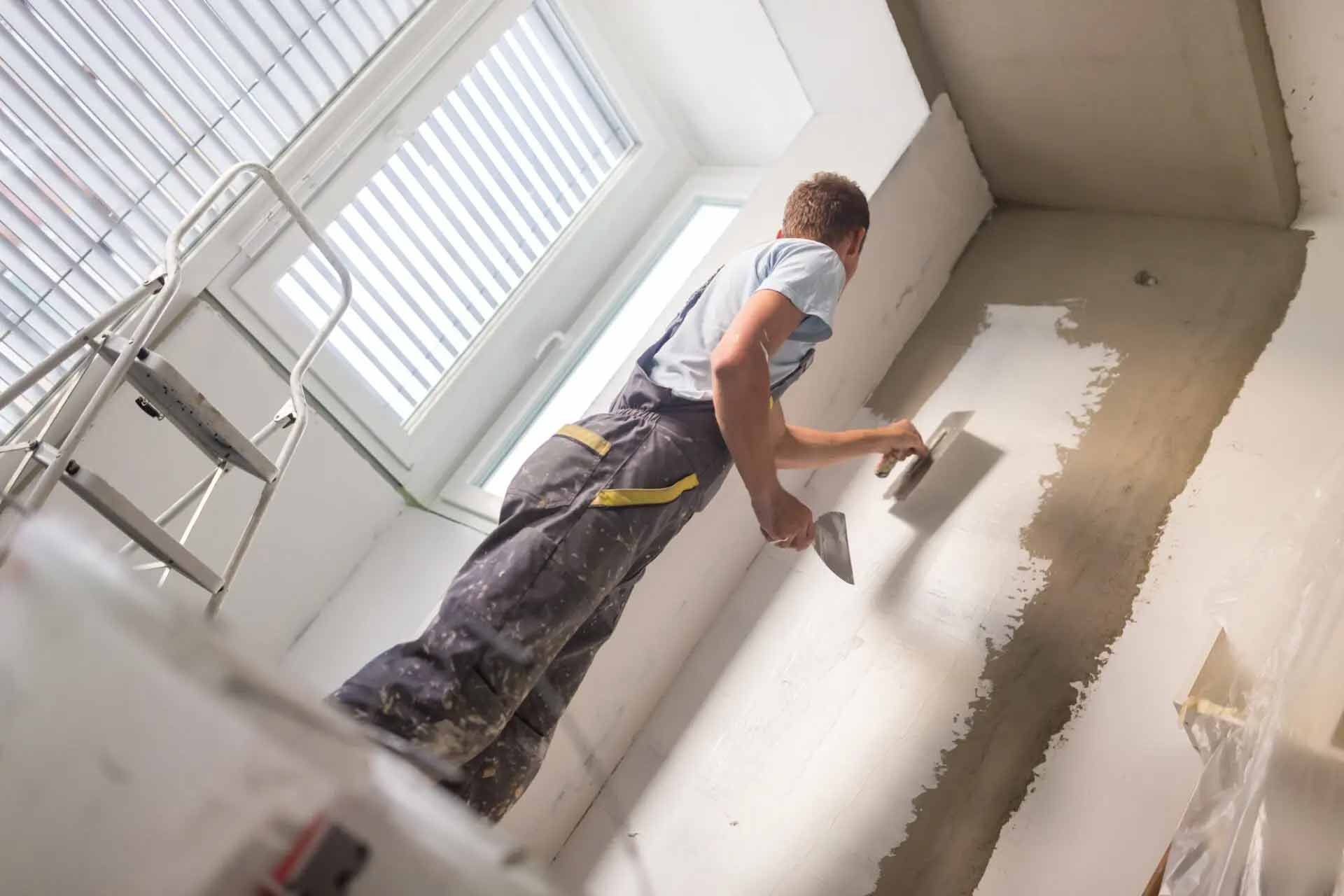Laying bricks is a difficult task that requires a great deal of skill. You will need tools like pointed trowels, bolster chisels, and club hammers. It would help to have a spade and a wheelbarrow for mixing mortar.
Start by mixing masonry cement or mortar. You want it to be a mix of three parts: sand and one part cement. Click https://www.bricklayerperthwa.com.au/ to learn more.
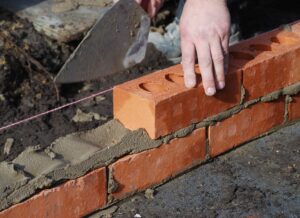
When constructing a brick wall, digging and preparing the foundation is important. This will ensure that the walls are level and strong, which is essential for stability. For this, you need a shovel or mortar mixer, a trowel and plenty of sand and cement. The sand must be soaked so that it is soft and pliable, while the cement should be mixed with water until it is a thick consistency.
Start by digging a trench for the foundation. The size of this will depend on the thickness of your bricks. A brick wall of a single thickness requires a foundation two courses deep, while a double brick wall will require four courses. Once the foundation is dug, fill it with concrete and allow it to set.
For best results, it is recommended to use concrete that is specially formulated for brick foundations. This will help to prevent the formation of air bubbles and promote proper mixing. Also, it is vital that the concrete is allowed to set for several days before proceeding with any other construction on your brick wall.
Make guideposts or gauging rods, which will help you to construct your brick wall straight and at the correct height. These can be made from long wooden boards or posts and should be the length of your wall. They will serve as a line to follow, and can be used in conjunction with your level or spirit level to make sure that your bricks are lined up properly.
Place the first course of bricks on the foundation, using your gauging rods as a guide. Use a level to check that they are straight, and make any adjustments needed. Before placing the next brick, butter it by spreading a thin layer of mortar across its short edge. Then place the brick in position, up against the string line, and tap it down with your trowel handle to bed it into the mortar.
When laying bricks, the quality of your mortar is just as important as the bricks themselves. Mortar is a mix of sand, water and cement, and should be of the right consistency to ensure that your brickwork is solid and durable. You can get ready-mixed mortar, but it is generally a good idea to mix your own. You’ll need a wheelbarrow, a shovel and a mudboard to help you achieve the right mix ratio. To make mortar, start by adding sand and then slowly add the cement and water. Using a shovel, mix the dry materials together until they’re completely absorbed by the water. For the best results, you should aim for a consistency similar to pudding.
Once you have your mortar mixed, transfer it to the mudboard and use a trowel to mix it more thoroughly. This will give the mortar a textured surface that will grip bricks better. You can also add plasticisers and other additives to improve the strength of your mortar, but only if needed.
To begin laying your bricks, first mark out a guideline (or gauging rods) along the length of your wall. The gauging rods will help you keep your wall straight, and should be driven into the ground at each end of the structure.
After marking your guideline, lay the bottom row of bricks. When you’ve finished the first course, use a spirit level to check that it is perfectly level. Then, butter the end of the next brick with mortar and press it down against the first one. This will give the classic indention you see on most brick walls, and will also help to prevent the bottom of the brick from lifting as it gets older.
Bricklaying is a trade that takes practice to perfect. To make sure you get it right the first time, work slowly and carefully. Rushing it can lead to problems that are time consuming and difficult to sort out. A single course of bricks that is not level is easy to fix, but it is a lot more challenging to redo a wall 4 courses deep!
Ensure you have enough bricks to build your structure and that the mortar mix you have made is consistent. You don’t want it too runny or thick, so test the consistency on a piece of scrap material. If it is too runny, add more sand; if it is too thick, add water or hydrated lime (a type of additive to help with the consistency).
Begin with a row of guide bricks on either end of your footing if you have one. Stretch a string between them to make sure that the first row is straight. If you don’t have a string, use timber boards or other solid material as guides instead. These will become your gauging rods, and they will be used to check the levels of each brick later on in the course.
Butter a new brick with mortar and lay it down on the guide bricks, making sure that the ends of the brick are facing one another, not the middle. Make sure the brick is firmly in place and that there is a good amount of mortar between each edge of the brick, otherwise it will crack later on.
Continue the process for the rest of the row, being careful to align your gauging rods and level as you go. Check each row with your spirit level and tap each brick with a trowel to make sure that it is sitting correctly.
Once you’ve established the foundation and laid your first course of bricks, it is time to start building your wall. The best way to do this is by using a guideline and level. This will help to ensure that your brick wall is straight and at the correct height. You can also use gauging rods, which are long wooden boards that are driven into the ground at either end of the structure and marked with markings to show you where each course should be.
Begin by laying a bed of mortar along the line where you want your brick wall to be. Then place a brick at one end of this line, using the string line as a guide. Butter up the other end of the brick with mortar and abut it to the first brick, making sure that you have an even surface of bricks.
Continue to build the second row of bricks, always ensuring that you are following the string line and that your bricks are at the correct height. You should also remember to stagger vertical joints, as this will help to avoid weak points in the brickwork.
If you are building a very tall brick wall, it may be necessary to cut some of the bricks in half to get the right length. This can be done with a bolster chisel and lump hammer. It is important to keep checking that your brick walls are both straight and level, so make sure you use a spirit level as you build.
When you have reached the desired height of your brick wall, it is time to begin laying the paving slabs or concrete that will form the base of the structure. Ensure that these are set in evenly and are at the correct depth to give your brickwork stability and strength.
Bricks have been used for building strong and durable structures since the dawn of time. The material is resilient and easy to work with, requiring only the right tools and a little know-how to become a competent bricklayer. You will need a trowel, mortar mix, and the bricks you want to use for your project. Creating a wall from bricks is an excellent way to add both structure and visual interest to any home or garden. It is important to regularly check your brickwork for level and plumbness, using a spirit level or a mason’s line held down with pins.
A brick wall should be built up in rows, known as courses, to create the desired height of your final structure. Each course of bricks should be laid in the same manner as the first row, spreading mortar on the bottom and side of the brick, pressing firmly and checking evenness with a level.
For consistency and strength, you may need to stagger your courses of bricks. To do this, alternate half-bricks with full bricks in the second row and on both ends of the wall.
Some bricks will have to be cut in half for this pattern. This can be done by using a hammer and lump chisel. Alternatively, you could use a crowbar to split the brick in two. It is recommended that a bolster chisel be used to make the cut, as it has a stronger edge than a standard hammer.
The third row should be laid as the previous two, spreading and laying in the same way, with regular checks for level and plumbness. Once the bricks are in place, they should be “striked” with a teeming tool or other similar instrument to create the classic concave depression in the mortar. Repeat this process for the fourth, fifth, and sixth rows of your brick wall.
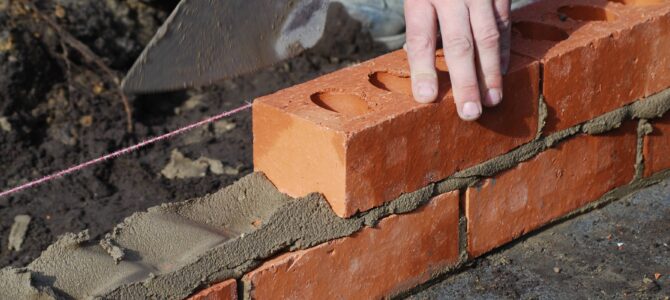
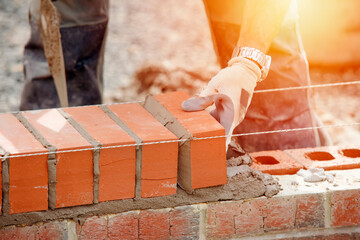
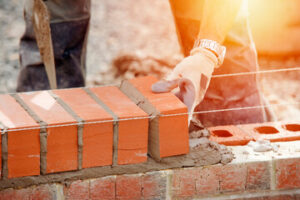
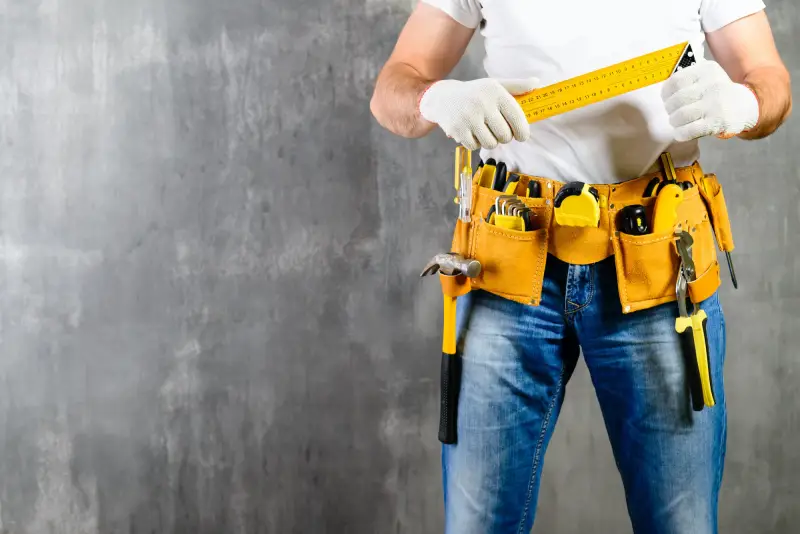


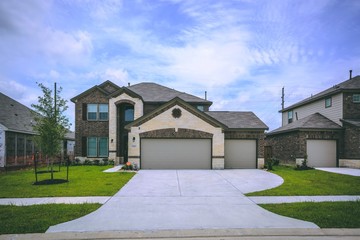



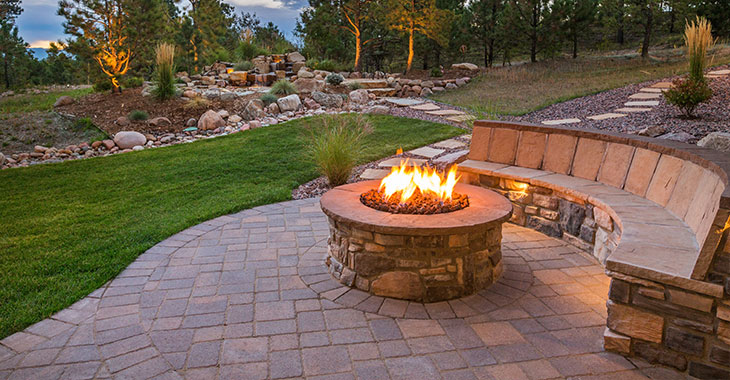
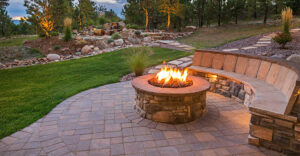
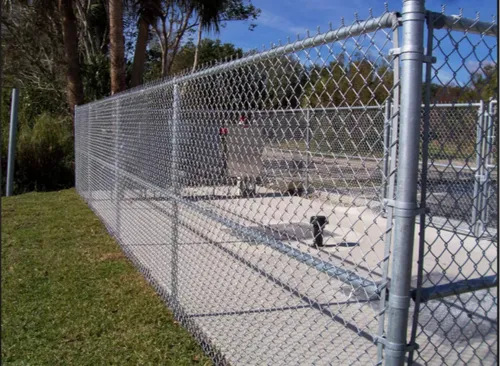
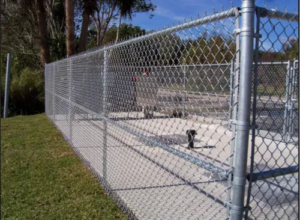
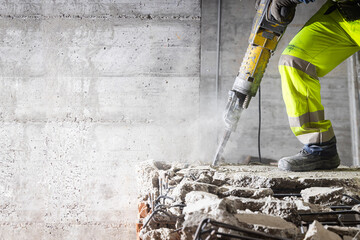
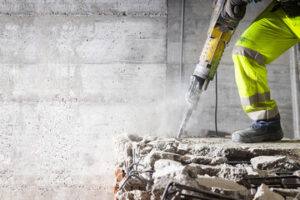 Cost
Cost